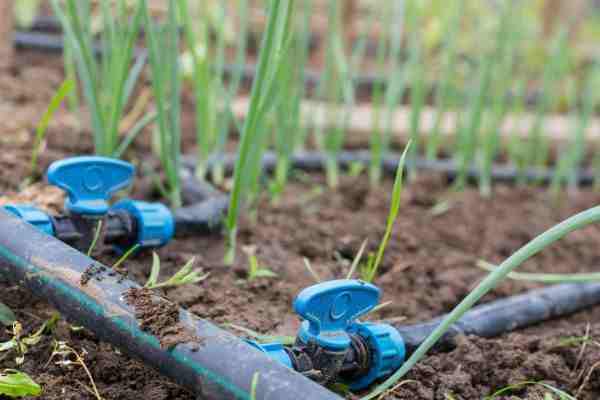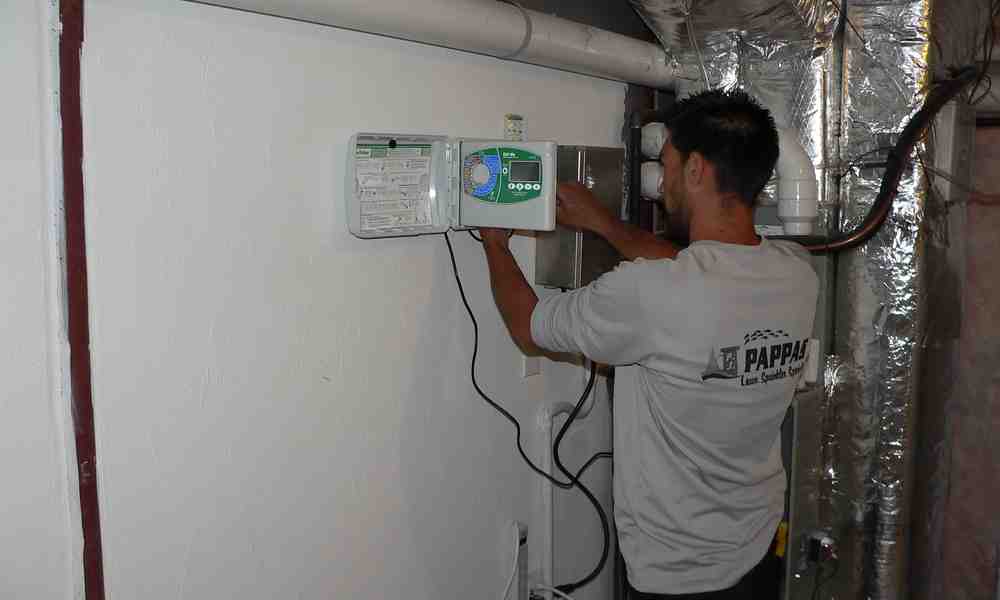Irrigation Design: Top Tips & Tools for 2024 Success
The Fundamentals of Irrigation Design
Irrigation design is the backbone of ensuring your lawn or garden stays lush and healthy year-round. This process involves careful planning and precise execution to avoid common pitfalls like dry spots, swamps, or watering your neighbor’s yard.
Key Points to Remember:
- Proper irrigation design saves time and money.
- Good design ensures even water distribution and prevents runoff.
- Consider all landscape features like trees, pools, and fences when planning.
- A detailed parts list is essential for a successful installation.
Irrigation design might seem overwhelming initially, but getting it right pays dividends. Whether designing a small residential system or a large commercial layout, attention to detail makes all the difference.
I’m Peter Pappas, the owner of P.J. Pappas Company. With over 37 years of experience in irrigation design, I’ve seen how a well-designed system can transform lawns and gardens. Let’s dive into what makes a successful irrigation design and how you can implement it flawlessly.

Understanding Irrigation Design
Types of Irrigation Systems
When it comes to irrigation design, choosing the right system is critical. There are three main types of irrigation systems: surface, sprinkler, and drip.
Surface Irrigation: This is the most traditional method, where water flows over the soil by gravity. It’s simple and cost-effective but not very efficient. Surface irrigation often leads to uneven water distribution and runoff.
Sprinkler Irrigation: This system mimics natural rainfall. It uses various types of sprinkler heads to distribute water evenly. Sprinkler systems are versatile and can cover large areas. They are great for lawns and gardens but can be less efficient due to evaporation and wind drift.
Drip Irrigation: Drip systems deliver water directly to the plant roots through a network of tubes and emitters. This method is highly efficient, reducing water waste and ensuring plants get just the right amount of moisture. Drip irrigation is ideal for flower beds, shrubs, and crops.
Key Components of an Effective Design
An effective irrigation design hinges on several key components: water source, distribution, and coverage.
Water Source: The starting point for any irrigation system is the water source. This could be a well, a pond, or a municipal supply. Knowing your water source helps determine the system’s capacity and reliability.
Distribution: How water moves from the source to the plants is crucial. This involves a network of pipes, valves, and sprinkler heads or drip emitters. Proper distribution ensures that water reaches all areas evenly and efficiently.
Coverage: Ensuring that every part of your lawn or garden gets adequate water is essential. This is where head-to-head coverage comes into play. Overlapping sprinkler patterns ensure there are no dry spots or over-watered areas.
Irrigation Efficiency, Water Use, Profitability Impact
Irrigation Efficiency: Efficient irrigation means using the least amount of water necessary to achieve the desired results. It involves choosing the right system, proper design, and regular maintenance. Efficient systems save water, reduce costs, and promote healthier plants.
Water Use: Understanding how much water your landscape needs is vital. Factors like soil type, plant species, and climate all play a role. For instance, lawns with clay soil may require less frequent watering compared to sandy soils, which lose water quickly.
Profitability Impact: Efficient irrigation can significantly impact your bottom line. Lower water bills, reduced labor costs, and healthier plants that require less maintenance all contribute to better profitability. In commercial settings, a well-designed system can enhance property value and curb appeal.
By focusing on these key aspects, you can design an irrigation system that not only meets your needs but also promotes sustainability and cost-effectiveness. Next, we’ll explore how to plan your irrigation layout for optimal performance.
Planning Your Irrigation Layout
Designing an effective irrigation system begins with understanding the layout of your yard. This means planning the placement of sprinkler heads, creating zones, and calculating water flow and pressure.
Head-to-Head Coverage
Head-to-head coverage ensures that every part of your lawn gets adequate water. This method involves placing sprinkler heads so that their spray patterns overlap. This overlap prevents dry spots and ensures even watering. For example, if one sprinkler head sprays 10 feet, the next head should be placed 10 feet away.
Sprinkler Placement
Proper placement of sprinkler heads is crucial. Different areas require different types of heads. For large open spaces, rotors are ideal. They cover large areas and have adjustable spray distances. For smaller areas or flower beds, pop-up heads work best. They provide precise watering and can be adjusted to different spray distances.
Zone Creation
Creating zones helps manage water distribution efficiently. Each zone should include areas with similar watering needs. For example, group sunny areas together and shady areas together. This allows you to tailor the watering schedule for each zone, ensuring that all parts of your lawn get the right amount of water.
Calculating Water Flow and Pressure
To ensure your irrigation system works efficiently, you need to calculate water flow and pressure.
GPM Calculation: Measure your flow rate in gallons per minute (GPM). Place a 5-gallon bucket under an outside faucet, turn it on fully, and time how long it takes to fill. Use the formula:
Gallons (container size) ÷ Time (seconds) × 60 = GPM
For example, if it takes 30 seconds to fill a 5-gallon bucket:
5 ÷ 30 × 60 = 10 GPM
PSI Measurement: Measure your water pressure using a pressure gauge. Attach the gauge to an outside faucet, turn on the water, and record the reading. Most systems require 40 to 60 PSI to function properly. Measure at the time of day you plan to use your system for the most accurate reading.
Tools and Resources for Design
Several tools can help you design your irrigation system.
Irrigation Design Software: These programs allow you to create detailed plans. They often include features like automatic zone creation and head placement optimization. Examples include Rain Bird’s design software.
Free Apps: Apps like the Rain Bird Homeowner Sprinkler Design Service offer convenient tools for planning your system. These apps can help you create a custom plan based on your yard’s measurements and water availability.
Online Calculators: Websites offer calculators for determining GPM and PSI, helping you ensure your system will function correctly. These tools simplify complex calculations, making it easier to design an efficient system.
By using these tools and following these guidelines, you can create an irrigation layout that ensures your lawn and garden receive the right amount of water, promoting healthy growth and sustainability.
Next, we’ll move on to implementing your irrigation design, including installation tips and maintenance advice.
Implementing Your Irrigation Design
Seasonal Adjustments and Maintenance
Implementing your irrigation design involves more than just installation. To keep your system running efficiently year-round, you need to perform regular seasonal adjustments and maintenance.
Winterizing Your System
Winterizing is crucial to prevent damage from freezing temperatures. Here’s how to do it:
- Shut Off the Water Supply: Turn off the main water supply to the irrigation system.
- Drain the System: Use compressed air to blow out any remaining water in the pipes and sprinklers. This prevents freezing and cracking.
- Insulate Exposed Components: Cover backflow preventers and valves with insulation or protective covers.
Spring Setup
Spring is the time to get your system back in shape:
- Inspect for Damage: Check all components for cracks or leaks that may have occurred over winter.
- Test the System: Turn on the water and run the system to ensure all zones are functioning correctly.
- Adjust Sprinkler Heads: Make sure sprinkler heads are aligned and providing even coverage.
Efficiency Checks
Regular efficiency checks help maintain optimal performance:
- Monitor Water Usage: Keep an eye on your water bills and system output to spot any unusual spikes indicating leaks.
- Check Coverage: Ensure that all areas are receiving the right amount of water. Adjust heads as needed.
- Inspect Components: Look for wear and tear on all parts, including pipes, valves, and sprinkler heads.
Troubleshooting Common Issues
Even the best-designed systems can run into problems. Here’s how to tackle some common issues:
Leaks
Leaks can waste water and damage your lawn. To fix leaks:
- Identify the Source: Look for wet spots or unusually green areas.
- Repair or Replace: Use pipe repair kits or replace damaged sections of pipe.
Blockages
Blockages can disrupt water flow and reduce efficiency. Here’s how to clear them:
- Check Sprinkler Heads: Remove and clean clogged sprinkler heads.
- Flush the System: Run water through the system to clear out any debris.
Uneven Watering
Uneven watering can cause dry spots and overwatered areas. To correct this:
- Adjust Sprinkler Heads: Ensure heads are properly aligned and not blocked by plants or debris.
- Check for Pressure Issues: Low pressure can cause uneven coverage. Verify that your system maintains adequate PSI.
By following these tips and performing regular maintenance, you can ensure your irrigation system operates efficiently and effectively throughout the year.
Next, we’ll explore advanced techniques in irrigation design, including water-saving technologies and smart systems.
Advanced Techniques in Irrigation Design
Utilizing Smart Irrigation Controllers
Smart irrigation controllers are game-changers in irrigation design. These controllers use technology to manage your watering schedule more efficiently.
Programmable Settings: You can set specific watering times and durations for different zones in your yard. This ensures each area gets the right amount of water.
Remote Management: With smart controllers, you can manage your irrigation system from your smartphone. This allows you to make adjustments on the go, whether you’re at home or away.
Water Conservation: Smart controllers can adjust watering schedules based on weather forecasts. If rain is expected, the system will skip a watering cycle, saving water and money. According to the Sonoma-Marin Saving Water Partnership, these technologies can significantly reduce water usage.
Landscape-Specific Irrigation Strategies
Every landscape is unique, requiring tailored irrigation strategies. Here are some key factors to consider:
Slopes: Water can easily run off slopes, causing erosion and uneven watering. To combat this, install sprinkler heads designed for slopes or use drip irrigation, which delivers water directly to the roots.
Varied Sun Exposure: Different parts of your yard get varying amounts of sunlight. Group plants with similar sunlight needs together and create separate zones for efficient watering. For example, areas with full sun will need more water compared to shaded areas.
Different Soil Types: Soil type affects water absorption and retention.
- Clay Soil: Absorbs water slowly but retains it well. Water these areas less frequently but for longer durations.
- Sandy Soil: Drains quickly and needs more frequent watering.
- Loam: The ideal soil type, absorbs and retains water well. Water these areas moderately.
Using these landscape-specific strategies ensures that every part of your yard gets the right amount of water, promoting healthy plant growth and conserving water.
Next, we’ll delve into frequently asked questions about irrigation design, addressing common concerns and providing expert advice.
Frequently Asked Questions about Irrigation Design
How do I design an irrigation plan?
Designing an irrigation plan can seem daunting, but breaking it down into simple steps makes it manageable:
-
Sketch Your Yard: Start by drawing a detailed map of your property. Divide it into sections such as front lawn, side lawn, flower beds, and slopes. Include all structures like the house, driveway, and sidewalks. This helps in visualizing the areas that need watering.
-
Identify Watering Zones: Group areas based on their watering needs. For example, sunny areas may need more water than shaded ones. Label these zones on your sketch.
-
Select Sprinkler Heads: Choose the appropriate sprinkler heads for each zone. Pop-up heads are great for medium areas, while rotors are suitable for larger spaces. For flower beds and shrubs, consider drip emitters or soaker lines.
-
Calculate Water Flow and Pressure: Determine the gallons per minute (GPM) and the water pressure (PSI) available. This helps in selecting the right equipment and ensuring efficient water distribution.
-
Plan the Layout: Arrange the sprinkler heads for head-to-head coverage, ensuring every part of your lawn gets watered evenly. Avoid placing sprinklers too close to trees, fences, or other obstructions.
-
Create a Parts List: List all the necessary components, including pipes, fittings, sprinkler heads, valves, and controllers. This ensures you have everything you need before starting the installation.
What is the best layout for irrigation?
The best layout for an irrigation system depends on several factors, including the size and shape of your yard, soil type, and plant needs. Here are some key principles:
- Head-to-Head Coverage: Place sprinkler heads so their spray patterns overlap. This ensures even water distribution and prevents dry spots.
- Zone Creation: Group areas with similar watering needs into zones. This allows for tailored watering schedules and efficient water use.
- Avoid Obstructions: Position sprinklers away from trees, fences, and other obstacles to prevent uneven watering and potential damage.
- Easy Access: Ensure valve boxes and controllers are easily accessible for maintenance. Placing them in clear locations avoids the hassle of digging through bushes or behind structures.
What are the three different designs of irrigation systems?
There are three main types of irrigation systems, each with its benefits and best-use scenarios:
-
Surface Irrigation: This traditional method involves distributing water over the soil surface by gravity. It’s simple and cost-effective but can lead to uneven watering and water wastage.
-
Sprinkler Irrigation: This system uses sprinkler heads to spray water over the landscape. It’s versatile and suitable for most lawns and gardens. Sprinkler heads can be pop-ups, rotors, or rotary, each catering to different area sizes and watering needs.
-
Drip Irrigation: Ideal for flower beds, shrubs, and vegetable gardens, drip irrigation delivers water directly to the plant roots through a network of tubes and emitters. It conserves water and reduces evaporation but requires careful planning and installation.
By understanding these systems and their applications, you can choose the best one for your landscape’s needs.
Next, we’ll explore advanced techniques in irrigation design, including water-saving technologies and smart systems.
Conclusion
At P.J. Pappas Company, we pride ourselves on our expertise in irrigation design and landscape lighting. With over 37 years of experience, we have honed our skills to provide precise and efficient solutions tailored to meet the unique needs of your property. Our focus on irrigation and lighting systems ensures that we stay updated with the latest technologies and best practices, delivering exceptional results every time.
Customized Solutions
We understand that every landscape is different, which is why we offer customized irrigation solutions. Whether you have a small residential lawn or a large commercial property, we design and install systems that are tailored to your specific requirements. Our goal is to create efficient and effective irrigation systems that save water and enhance the beauty of your landscape.
Contact Information
Ready to transform your lawn with a professionally designed irrigation system? Contact P.J. Pappas Company today to schedule a free estimate. Our team is dedicated to providing ongoing maintenance and support, ensuring your system runs smoothly year after year.
Call us at 781-935-9519 or click here to complete our online form.
For more information on how to design a lawn sprinkler system, visit our service page.
With P.J. Pappas, you can have peace of mind knowing your irrigation system is in the hands of dedicated professionals committed to exceeding your expectations. Let us help you achieve a lush, green lawn while conserving water and reducing costs.



